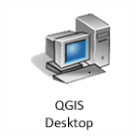

This work by the National Information Security and Geospatial Technologies Consortium (NISGTC), and except where otherwise noted, is licensed under the Creative Commons Attribution 3.0 Unported License.
Development was funded by the Department of Labor (DOL) Trade Adjustment Assistance Community College and Career Training (TAACCCT) Grant No. TC-22525-11-60-A-48; The National Information Security, Geospatial Technologies Consortium (NISGTC) is an entity of Collin College of Texas, Bellevue College of Washington, Bunker Hill Community College of Massachusetts, Del Mar College of Texas, Moraine Valley Community College of Illinois, Rio Salado College of Arizona, and Salt Lake Community College of Utah.
This workforce solution was funded by a grant awarded by the U.S. Department of Labor's Employment and Training Administration. The solution was created by the grantee and does not necessarily reflect the official position of the U.S. Department of Labor. The Department of Labor makes no guarantees, warranties or assurances of any kind, express or implied, with respect to such information, including any information on linked sites, and including, but not limited to accuracy of the information or its completeness, timeliness, usefulness, adequacy, continued availability or ownership.
Please review the content-specific requirements for QGIS labs.
QGIS labs are supported using the QGIS Pod. To enable the QGIS labs, check the box for "NISGTC QGIS" in the class settings. This must be done for each class requiring access to the labs.

| Lab | Title |
|---|---|
| 0 | Getting to Know FOSS and FOSS4G |
| 1 | GIS Application Paper Assignment |
| 2 | Spatial Data Models |
| 3 | Understanding Coordinate Systems and Map Projections |
| 4 | Displaying Geospatial Data |
| 5 | Creating Geospatial Data |
| 6 | Understanding Remote Sensing and Analysis |
| 7 | Basic Geospatial Analysis Techniques |
| Lab | Title |
|---|---|
| 1 | Reviewing the Basics of Geospatial Data |
| 2 | Introduction to Geospatial Analysis |
| 3 | Advanced Attributes and Spatial Queries for Data Exploration |
| 4 | Vector Data Analysis - Overlay Techniques |
| 5 | Vector Data Analysis - Creating a Site Selection Model |
| 6 | Vector Data Analysis - Network Analysis |
| 7 | Raster Data Analysis - Working with Topographic Data |
| 8 | Raster Data Analysis - Density Surfaces |
| Lab | Title |
|---|---|
| 1 | Reviewing the Basics of Geospatial Data |
| 2 | Setting Up a Project Database |
| 3 | Vector Data Topology |
| 4 | Spatial Data Quality |
| 5 | Raster Data Structure |
| 6 | Data Sources |
| Lab | Title |
|---|---|
| 1 | Creating a Colorful Map of the United States of America |
| 2 | Exploring Coordinate Systems and Map Projections |
| 3 | Map Elements and Design |
| 4 | IDP and Refugee Proportional Symbol Map |
| 5 | IDP and Refugee Proportional Symbol Map – Designing the Final Map |
| 6 | Countries with Refugees and Internally Displaced Persons Over 1 Million Map Design |
| 7 | Design and Label a Downtown Street Map |
| Lab | Title |
|---|---|
| 3 | Image Composite, Mosaic, Subset |
| 4 | Image Rectification |
| 5 | Unsupervised Classification |